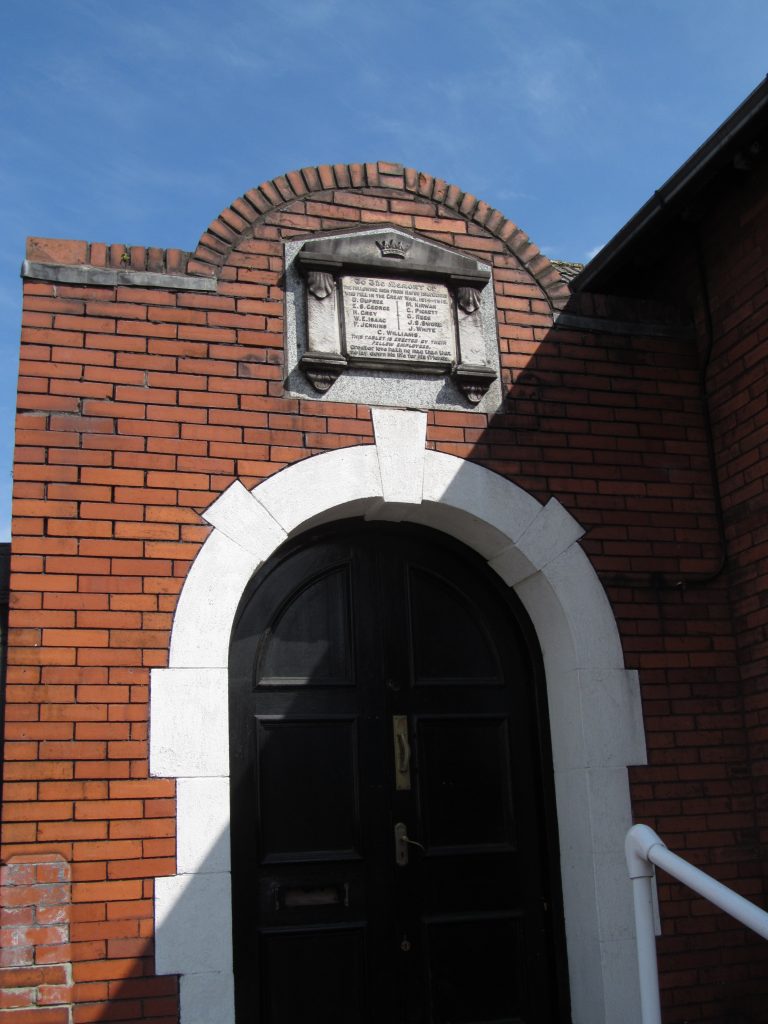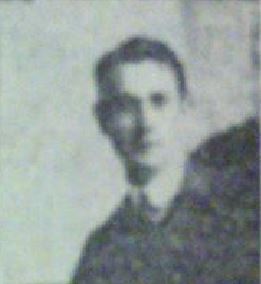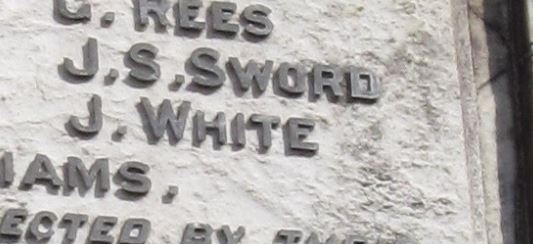The Hafod Isha Memorial, Swansea
The ‘Welsh Memorials’ project is particularly interested in those war memorials that were established by particular communities to their men who were lost in the war. The most numerous of such memorials that we have collected come from chapels, but we are also interested in those that were created by schools, clubs and workplaces.
 For workplace memorials there is the particular challenge that most of the places of employment in 1914 do not exist any more – for example, none of the 400 coal mines that were operative in south Wales in 1914 are still around, and in most cases their buildings have been razed. Similarly, most of the heavy industries of Wales have either closed down or relocated. However in what used to be one of the prime areas of the non-ferrous metals industry in Wales, you can still see the building that once housed the Hafod Isha works, where nickel and cobalt was smelted.
For workplace memorials there is the particular challenge that most of the places of employment in 1914 do not exist any more – for example, none of the 400 coal mines that were operative in south Wales in 1914 are still around, and in most cases their buildings have been razed. Similarly, most of the heavy industries of Wales have either closed down or relocated. However in what used to be one of the prime areas of the non-ferrous metals industry in Wales, you can still see the building that once housed the Hafod Isha works, where nickel and cobalt was smelted.
On the outside of the building is a stone monument, listing the names of eleven men killed in the war. Interestingly, the memorial states it was instigated by the men’s ‘fellow employees’, rather than by the company itself.
Using items from the Swansea newspapers, it is possible to find out more about most of these men.  One of them has already been the subject of a blog article – Dai Dupree.
One of them has already been the subject of a blog article – Dai Dupree.
The first set of clues come in two ‘Rolls of Honour’ in the Cambria Daily Leader, which list the men from the works that had enlisted in September and October 1914. There are 64 names in the list published on 23 October – and of these, seven (Dupree; George; Isaac; Jenkins; Rees; Sword and Williams) are on the memorial.
Thus we know that E. S. George is Emin Stanley George, killed in the vicinity of Ypres while serving with the Dorsetshire Regiment in March 1915; George Rees was killed in June 1915 while serving with the South Wales Borderers; William Edward Isaac was serving in the Machine Gun section of the Welsh Regiment when he was killed in August 1916 and Fred Jenkins was in the Oxford and Bucks Regiment when he was killed in the same month on the Salonican Front. The fact that Charles Williams is identified in the October 1914 list as serving with the ‘South Lancashire Light Infantry’ makes it possible to say with some certainty that the ‘C. Williams’ on the Hafod Isha memorial is the Charles Thomas Williams who was killed on the Salonica Front in September 1918 while serving with the South Lancashire Regiment.
Perhaps the youngest of these men was Harold Grey, who died aboard S.S. Dundalk six days before his nineteenth birthday, on 14 October 1918.
Other newspaper reports make it easy to identify some of the other men. A brief notice of the death of Maurice Kirwan, who was killed in action in France in August 1917, aged 20, noted that ‘he was formerly employed at the Hafod Isha works’. This information was also given in the obituary to George Pickett , who died aboard H.M.S. Arbutus, which was torpedoed by a German U-boat in December 1917.
 The two that cannot be identified on the list of fallen complied by the Commonwealth War Graves Commission are J. White, for whom there are too many possibilities to be certain, and J. S. Sword, whose inclusion needs some further research. James Spence Sword is listed in the October 1914 list in the Cambria Daily Leader: records show that he joined the Royal Naval Volunteer Reserve on 13 October 1914 and served on various warships up until his discharge in early 1919. Despite the fact that his name is missing in the CWGC list, the fact that his work colleagues considered him a casualty of the war suggests that he died later as a result of a wound or illness picked up during his war service.
The two that cannot be identified on the list of fallen complied by the Commonwealth War Graves Commission are J. White, for whom there are too many possibilities to be certain, and J. S. Sword, whose inclusion needs some further research. James Spence Sword is listed in the October 1914 list in the Cambria Daily Leader: records show that he joined the Royal Naval Volunteer Reserve on 13 October 1914 and served on various warships up until his discharge in early 1919. Despite the fact that his name is missing in the CWGC list, the fact that his work colleagues considered him a casualty of the war suggests that he died later as a result of a wound or illness picked up during his war service.
One further question that cannot be easily answered is why some other war casualties who were noted in the newspapers as former employees of Hafod Isha were not included on the memorial. One example of this is James Heffron, whose death while serving with the Somerset Light Infantry was reported in August 1915.
g.h.matthews February 27th, 2017
Posted In: Uncategorized
